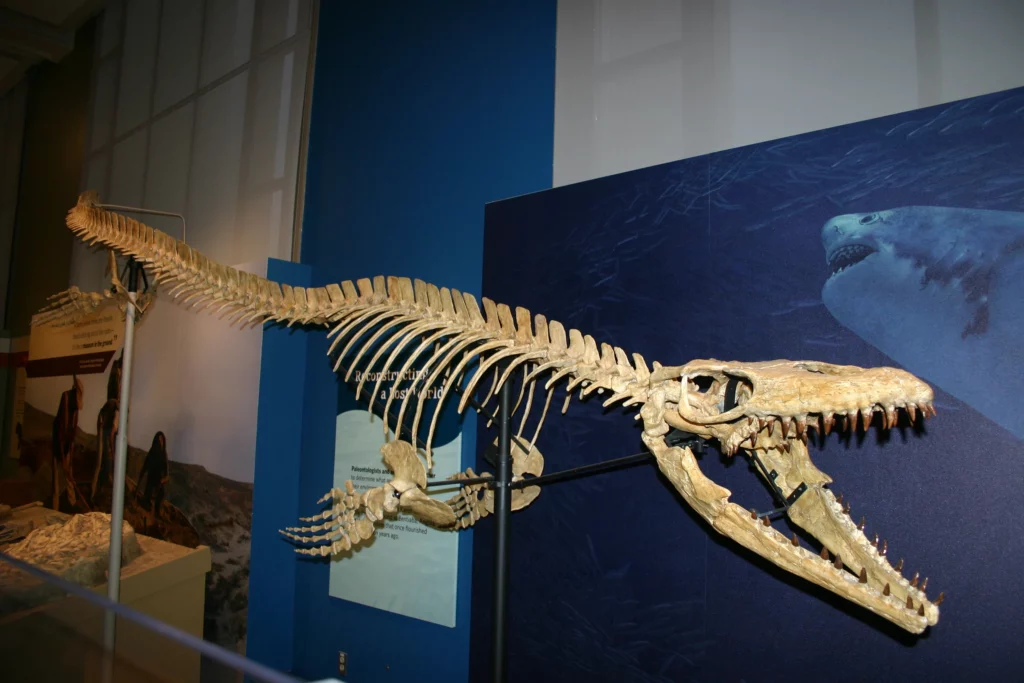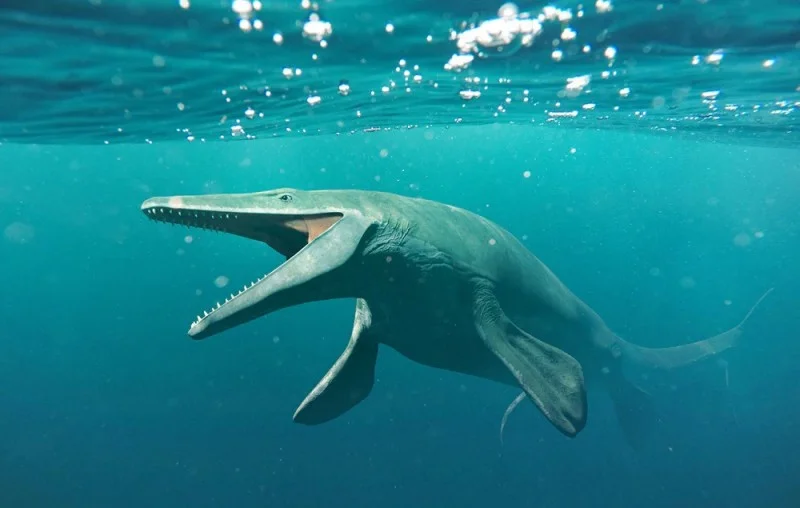Paleontologists have made an extraordinary discovery in a natural history museum in the UK, uncovering the fossilized remains of a “humongous huge” ancient sea monster. According to a report by Life Science, the four bones found in the Abingdon County Hall Museum belonged to an unknown species of Jurassic predator called a pliosaur, which could grow up to almost 50 feet (15 meters) long, twice the size of an orca.
The fossilized remains provide new insights into the scale of prehistoric creatures, which have been previously estimated to be much smaller. David Martill, a professor of palaeobiology at the University of Portsmouth in the UK, who came across the bones while looking through fossil drawers, said that it was wonderful to prove that there was indeed a truly gigantic pliosaur species in the Late Jurassic seas. He also believes that one day, evidence may be found that this monstrous species was even bigger.

The fossils, which come from the Kimmeridge Clay Formation and were originally discovered during excavations at Warren Farm in Oxfordshire, were unearthed from a deposit dated around 152 million years ago during the late Jurassic. By laser scanning the fossils, Martill and his colleagues determined that they were of a terrible sea monster that stretched from around 32 feet to 47 feet (9.8 to 14.4 m) long, making it the largest pliosaur ever discovered.
Pliosaurs were the ocean’s biggest predators during the Jurassic period (201 to 145 million years ago), with four powerful, paddle-like flippers, and likely ambush predators that preyed on ichthyosaurs, long-necked plesiosaurs, and maybe even smaller marine crocodiles, simply by biting them in half and taking chunks off them. They crushed their prey with a bite more powerful than that of a Tyrannosaurus rex.
The earlier one of the largest known pliosaurs, Kronosaurus (Kronosaurus queenslandicus), grew to between 33 to 36 feet (10 to 11 meters) long. The discovery of this new pliosaur species, which was found by chance, adds to our understanding of the incredible diversity of prehistoric marine life and the evolution of oceanic ecosystems.
The discovery will likely lead to more research and study into the ancient predators, as well as interest from paleontology enthusiasts around the world.




